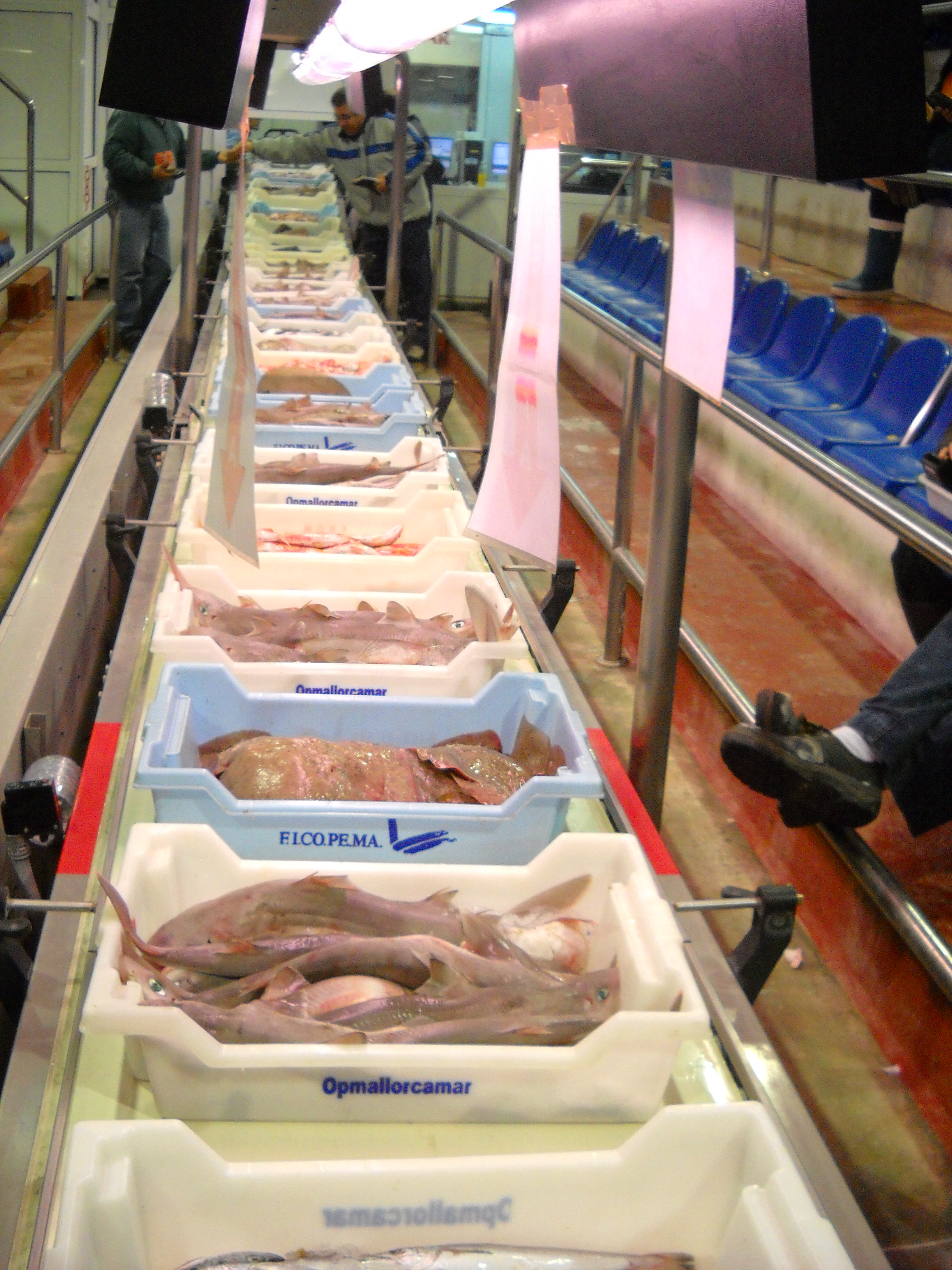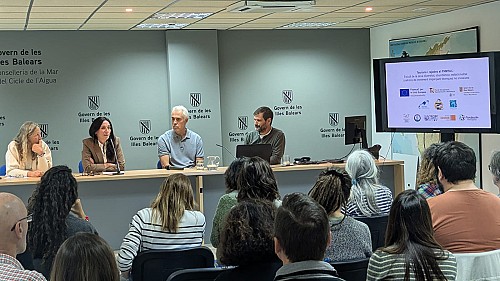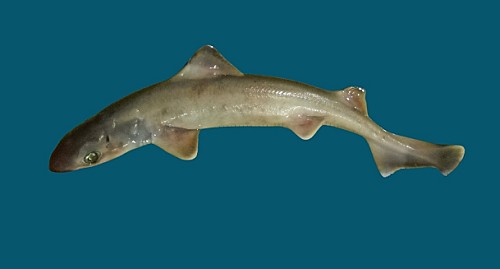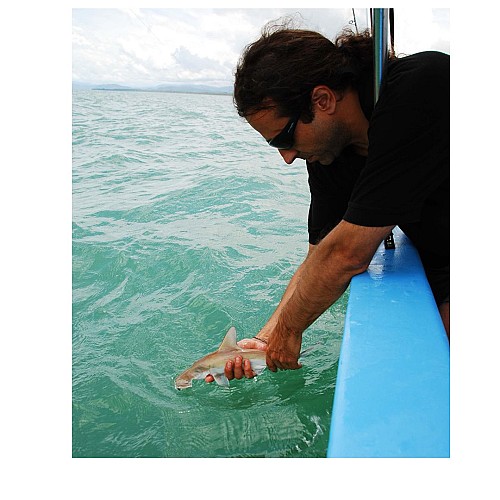Palma Fish Market: a meeting point for science and fishermen
Every working day, Mallorca fishermen take their daily catch to Sa Llonja which is about 100m from the Real Club Nautico de Palma. Sa Llonja is where 70% of landings by Balearic fishing fleet are sold via auction. Fishing vessels land their catch at their respective ports, and from there the fish is taken to Sa Llonja where it is stored before the auction starts. In a few ports like Port Andratx or Cala Rajada fish can be bought at designated “first point of sale” counters but everything else must be taken to Palma.
The fish auction starts around 4.30am when accredited fish buyers and distributors take a seat in a theatre-like hall holding a personal remote-control device. Boxes of fish, prawns and fresh seafood move through a convey or belt until they get to center stage and a camera projects the image on a large screen for everyone to see the content of the box. Details about the species, weight and fishing vessel are shown on the screen together with the initial bidding price.

A loud beep indicates when the auction for that specific box begins and the screen shows the price going down like a countdown timer until a buyer presses the “buy” button in his remote control.The name of the buyer and the final price appears on screen anda ticket is printed and dropped in the box. Then the nextbox moves forward, and so on until all the fish has been auctioned and sold. The initial bidding price varies depending on the species, the time of the year and the availability of fish for that day. This is an important detail because if fishermen manage their days at sea and catches well, then they can fetch higher prices.
This fish auction system is widely extended across Spain. Most ports from Catalonia to Andalucia have similar auction systems. Interestingly, this is not the case for Ibiza where fishermen agree on a market sale price for each species at the start of the year and they maintain it for the whole year. This is an innovative model because it provides more stability to fishermen. Compared to market fluctuations, they sell the fish at a relatively higher price during winter when demand is low and a relatively cheaper price during high-demand season, but they have a guaranteed price.
A couple of decades ago, fish auctions took place in the same way but without all the electronics. A man would start counting down out loud surrounded by fish buyers until someone would make a sign. One of the benefits of an electronic auction system is that all data about species, weight, vessel, and sales price is recorded automatically. This provides a very valuable source of data to improve management of the fishery, the economic performance of the fleet and to design conservation measures for vulnerable species such as sharks and rays.
Healthy populations of sharks and rays indicate a good state of conservation. Unfortunately, the number of sharks and rays in the Balearic Sea has gone down dramatically over the past decades as in the rest of the Mediterranean. Recovering these species is a priority for the Marilles Foundation, an objective shared by many. But to do so we must improve our knowledge about these species and the pressures they are subject to.
This is why last November we agreed to fund a study to estimate the quantity and diversity of shark and rays that are landed by the Balearic fishing fleet and - using fish auction records – identify which species are caught by which fishing gears, when and where. The research is led by shark specialist Biel Morey together with two other marine biologists who throughout this year will be visiting the fish auction in Palma on a weekly basis. We hope that the results of the study will help us to design measures to recover sharks and rays in Balearic waters. This is a critical step towards the design of a Shark and Rays Conservation Action Plan which we hope the Balearic Government will approve within the next two years. More updates on this front very soon. In the meantime, please remember that the only thing to fear about sharks is their extinction.






